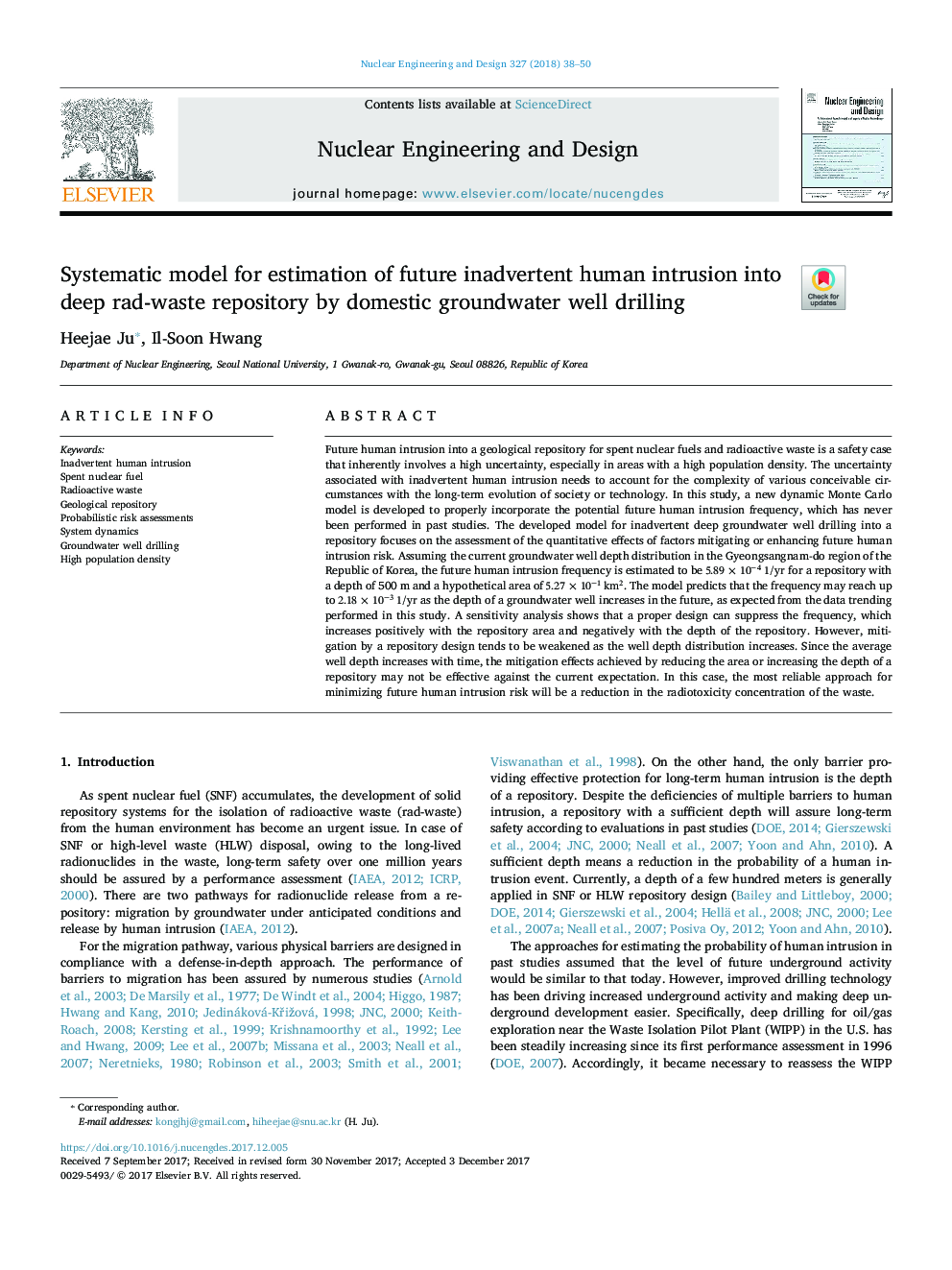| Article ID | Journal | Published Year | Pages | File Type |
|---|---|---|---|---|
| 6759483 | Nuclear Engineering and Design | 2018 | 13 Pages |
Abstract
Future human intrusion into a geological repository for spent nuclear fuels and radioactive waste is a safety case that inherently involves a high uncertainty, especially in areas with a high population density. The uncertainty associated with inadvertent human intrusion needs to account for the complexity of various conceivable circumstances with the long-term evolution of society or technology. In this study, a new dynamic Monte Carlo model is developed to properly incorporate the potential future human intrusion frequency, which has never been performed in past studies. The developed model for inadvertent deep groundwater well drilling into a repository focuses on the assessment of the quantitative effects of factors mitigating or enhancing future human intrusion risk. Assuming the current groundwater well depth distribution in the Gyeongsangnam-do region of the Republic of Korea, the future human intrusion frequency is estimated to be 5.89Ã10-41/yr for a repository with a depth of 500â¯m and a hypothetical area of 5.27Ã10-1km2. The model predicts that the frequency may reach up to 2.18Ã10-31/yr as the depth of a groundwater well increases in the future, as expected from the data trending performed in this study. A sensitivity analysis shows that a proper design can suppress the frequency, which increases positively with the repository area and negatively with the depth of the repository. However, mitigation by a repository design tends to be weakened as the well depth distribution increases. Since the average well depth increases with time, the mitigation effects achieved by reducing the area or increasing the depth of a repository may not be effective against the current expectation. In this case, the most reliable approach for minimizing future human intrusion risk will be a reduction in the radiotoxicity concentration of the waste.
Related Topics
Physical Sciences and Engineering
Energy
Energy Engineering and Power Technology
Authors
Heejae Ju, Il-Soon Hwang,
